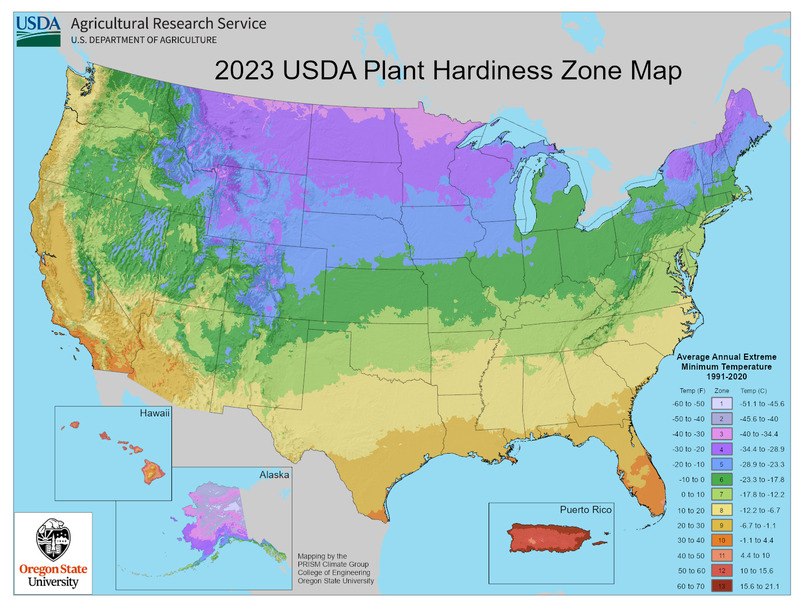The 30-year average of the lowest yearly winter temperatures for a certain location serves as the basis for the map. It is split into 13 zones, each of which represents a temperature range of 10 degrees. Each zone is further divided into two half zones, called A and B.
Remote areas of Alaska see the lowest temperatures, which may drop as low as -60 degrees Fahrenheit. Puerto Rico’s shore experiences the hottest temperatures, reaching up to 70 degrees.
According to Dr. Daly, the areas around Arkansas, Kentucky, Missouri, and Tennessee saw the most shifts, with temperatures rising by up to five degrees.
According to him, certain zone changes were a reflection of the data collection process, which included the use of additional weather stations and more complex mapping techniques that incorporated ZIP code data.
It may be challenging to estimate climate change over time using an extreme statistic, such as the historical average of a region’s lowest winter temperature, according to Art DeGaetano, director of Cornell University’s Northeast Regional Climate Center.
The planting zones are seen to be moving northward as winters become milder in previous iterations of the chart. The majority of the nation has moved one half zone from the 1990 edition of the map when the Agriculture Department produced a revised version in 2012.
The department’s Risk Management Agency utilizes the plant hardiness map to establish some crop insurance requirements, among other purposes in commercial agriculture.
However, gardeners are its most frequent users, and with good reason: winter temperatures will determine which perennials will survive to spring, which ones should be brought inside, and which ones shouldn’t be planted in the first place. Therefore, gardeners need to know which zone they’re in.
Adaptation indicators are not hard to see. For instance, when temperatures increase, some native plants—like sugar maples—are becoming less common in the New York metropolitan region. Meanwhile, in the New York Botanical Garden, several Southern flora, like camellias, the state flower of Alabama, have begun to bloom.













+ There are no comments
Add yours